Apprehending the Artifact
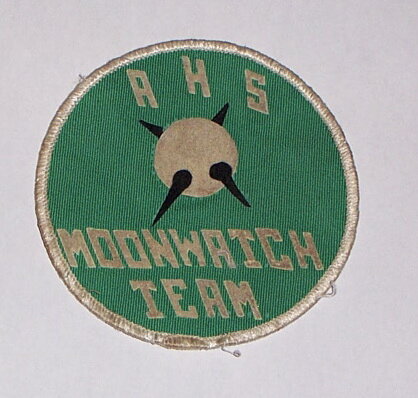 Back in 2008, NASA’s Goddard Space Flight Center invited me to give a talk. Being somewhat of a space geek, this was pretty exciting. The occasion was the recent publication of my book Keep Watching the Skies: The Story of Operation Moonwatch & the Dawn of the Space Age (to keep it simple, “KWTS”).Moonwatch was a program for amateur/citizen scientists that Fred L. Whipple, the director of the Smithsonian Astrophysical Observatory, first organized in 1956 as part of the International Geophysical Year.
Back in 2008, NASA’s Goddard Space Flight Center invited me to give a talk. Being somewhat of a space geek, this was pretty exciting. The occasion was the recent publication of my book Keep Watching the Skies: The Story of Operation Moonwatch & the Dawn of the Space Age (to keep it simple, “KWTS”).Moonwatch was a program for amateur/citizen scientists that Fred L. Whipple, the director of the Smithsonian Astrophysical Observatory, first organized in 1956 as part of the International Geophysical Year.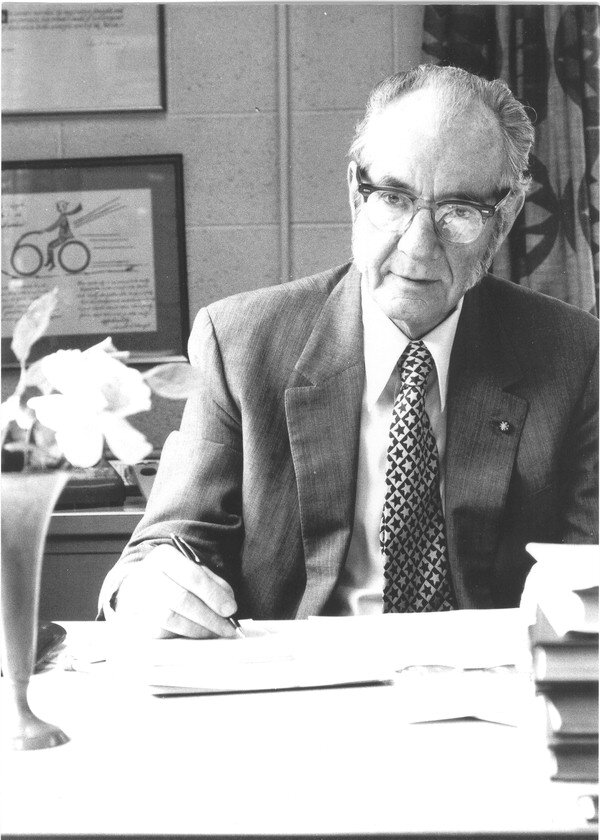 Whipple's initial goal was to enlist the aid of amateur astronomers and other citizens who would help “real” scientists spot satellites. Whipple first imagined Moonwatch as a way for citizens to participate in science and as a supplement to professionally-manned optical and radio tracking stations. But when Sputnik I and II appeared suddenly in late 1957, Moonwatchers around the world found themselves an essential component of the professional scientists’ global tracking network. After the IGY ended, the Smithsonian maintained Operation Moonwatch (with some NASA funding) until 1975.In the United States, enthusiasm for Moonwatch reflected was a thriving culture of amateur scientists (writer Jack Hitt has a new book on this called Bunch of Amateurs that I’ll review in a later post). During the Cold War, the United States also encouraged thousands of citizens to take part in the Ground Observer Corps, a nationwide program to spot Soviet bombers.
Whipple's initial goal was to enlist the aid of amateur astronomers and other citizens who would help “real” scientists spot satellites. Whipple first imagined Moonwatch as a way for citizens to participate in science and as a supplement to professionally-manned optical and radio tracking stations. But when Sputnik I and II appeared suddenly in late 1957, Moonwatchers around the world found themselves an essential component of the professional scientists’ global tracking network. After the IGY ended, the Smithsonian maintained Operation Moonwatch (with some NASA funding) until 1975.In the United States, enthusiasm for Moonwatch reflected was a thriving culture of amateur scientists (writer Jack Hitt has a new book on this called Bunch of Amateurs that I’ll review in a later post). During the Cold War, the United States also encouraged thousands of citizens to take part in the Ground Observer Corps, a nationwide program to spot Soviet bombers.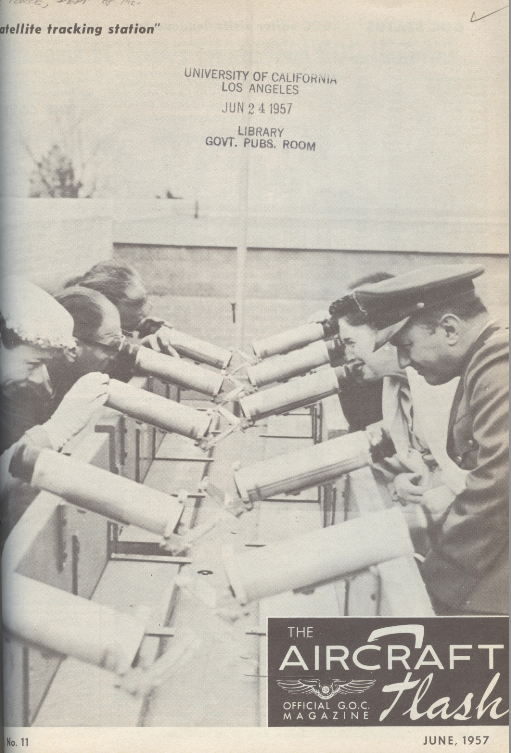 Finally, the enthusiasm and interest that teenagers and young adults had in science and technology - think Mr. Wizard - helped Moonwatch become a success. KWTS describes how Moonwatch brought together and combined these different facets of “Cold War culture” into a thriving activity for amateur scientists. ((Marcel LaFollette's new book Science on American Television covers this topic nicely))Coming back to that NASA talk: one of the people who heard me speak was George Gliba, a NASA employee and amateur astronomer. George really liked hearing about Moonwatch and we exchanged some emails after my talk. A few years went by and then an email popped up in my in-box. George had found a highly desirable piece of evidence which had eluded me during the two years I was researching the book: an actual Moonwatch telescope. And he was offering it to me.Now, one of the cool things about Moonwatch was the specially designed telescopes that team members used. Look at this drawing of one team:
Finally, the enthusiasm and interest that teenagers and young adults had in science and technology - think Mr. Wizard - helped Moonwatch become a success. KWTS describes how Moonwatch brought together and combined these different facets of “Cold War culture” into a thriving activity for amateur scientists. ((Marcel LaFollette's new book Science on American Television covers this topic nicely))Coming back to that NASA talk: one of the people who heard me speak was George Gliba, a NASA employee and amateur astronomer. George really liked hearing about Moonwatch and we exchanged some emails after my talk. A few years went by and then an email popped up in my in-box. George had found a highly desirable piece of evidence which had eluded me during the two years I was researching the book: an actual Moonwatch telescope. And he was offering it to me.Now, one of the cool things about Moonwatch was the specially designed telescopes that team members used. Look at this drawing of one team: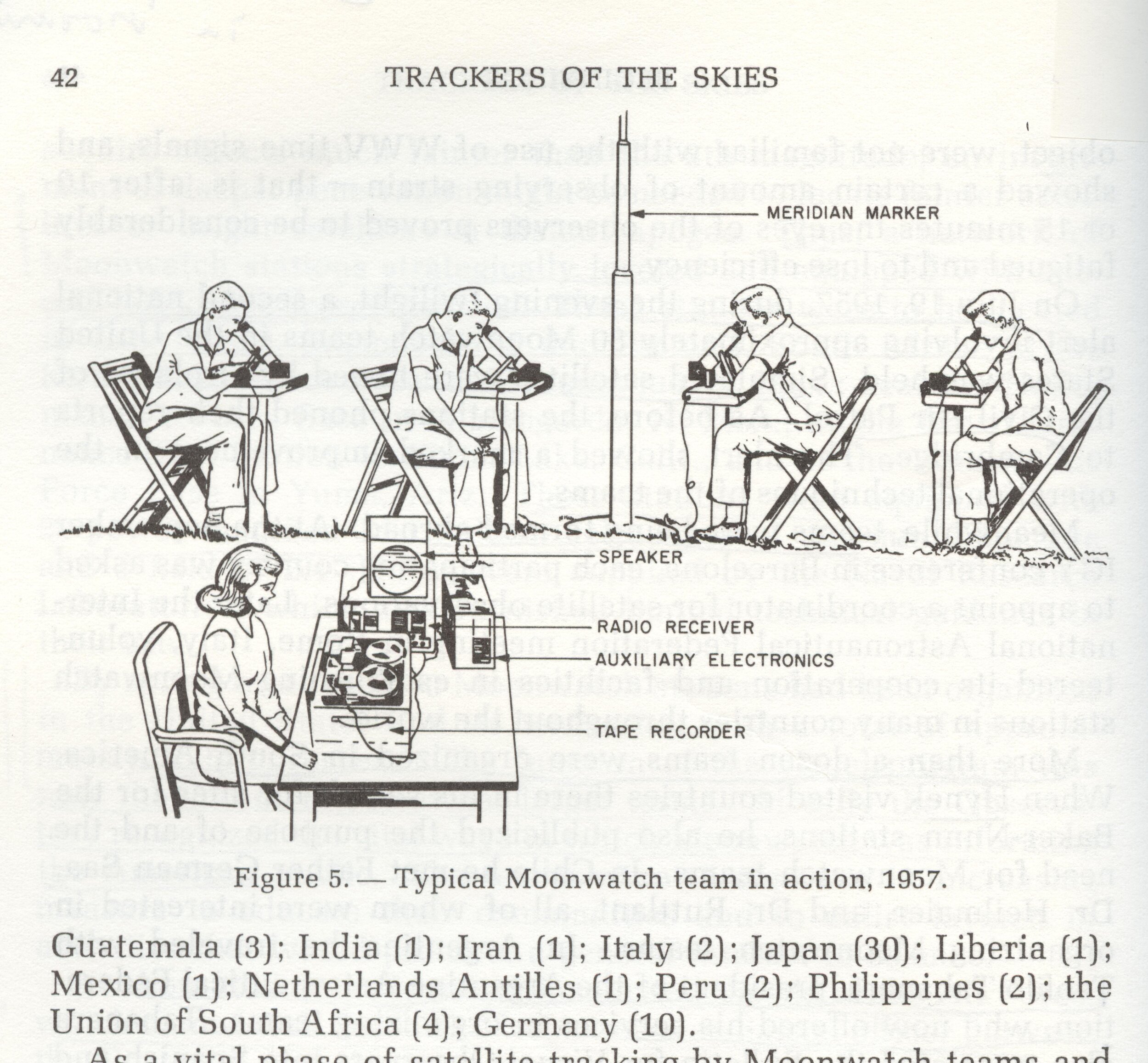 Because using the telescope to look up for extended periods of time could give many satellite spotters neck pains, Moonwatch telescopes were designed so that users actually looked down and aimed their telescope at a fixed mirror.
Because using the telescope to look up for extended periods of time could give many satellite spotters neck pains, Moonwatch telescopes were designed so that users actually looked down and aimed their telescope at a fixed mirror.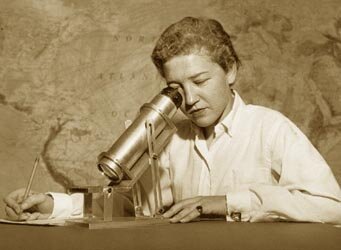 This mirror reflected what was visible in the sky above and presented it to the observer. Arranging a group of properly outfitted observers in a line and overlapping their telescopes’ fields of view created, in effect, a virtual picket line across which a transiting satellite would have to cross.At least two companies made telescopes that Moonwatchers could buy. For $49.50, one could buy a Satellite Scope, complete with mounting, directly from the Edmund Scientific Corporation. Edmund’s instrument featured a special eyepiece that gave a wide field of view. Meanwhile, its objective lens magnified the view at about five and half times. While many teams purchased commercially available instruments for satellite spotting, quite a few teams used telescopes their members assembled themselves. The Smithsonian encouraged, in fact, a simple design that a person already familiar with building tools to do amateur science could make. The parts for a homemade ‘scope cost around $30 and mainstream publications like Popular Mechanics and Popular Science published detailed instructions to build one.While browsing on eBay, George had found a Moonwatch telescope made by a Japanese company called Micronta. These were made, as close as I can tell, starting around 1957. The Google-lator tells me that this company also made other inexpensive scientific instruments as well as clocks, slide rules and cameras. What was especially exciting to George (and me) is that a similar instrument is in the collection at Harvard’s History of Science Department. The “Harvard telescope” was none other than the one that Fred Whipple had owned for years – George was kindly offering me its sibling.As I unpacked my “new” Moonwatch telescope, I thought of an essay that the late Princeton historian Michael Mahoney wrote in 2003. In “Reading a Machine,” Mahoney encouraged historians to think more seriously about material culture and to think about “things” as a complement to more familiar textual sources. As he put it, to think about “things is to think about society and the humans who constitute it. Disdain for visual and tactile modes of thinking can mean ignorance of ideas that vitally affect the human condition.” So – what did this particular object say?
This mirror reflected what was visible in the sky above and presented it to the observer. Arranging a group of properly outfitted observers in a line and overlapping their telescopes’ fields of view created, in effect, a virtual picket line across which a transiting satellite would have to cross.At least two companies made telescopes that Moonwatchers could buy. For $49.50, one could buy a Satellite Scope, complete with mounting, directly from the Edmund Scientific Corporation. Edmund’s instrument featured a special eyepiece that gave a wide field of view. Meanwhile, its objective lens magnified the view at about five and half times. While many teams purchased commercially available instruments for satellite spotting, quite a few teams used telescopes their members assembled themselves. The Smithsonian encouraged, in fact, a simple design that a person already familiar with building tools to do amateur science could make. The parts for a homemade ‘scope cost around $30 and mainstream publications like Popular Mechanics and Popular Science published detailed instructions to build one.While browsing on eBay, George had found a Moonwatch telescope made by a Japanese company called Micronta. These were made, as close as I can tell, starting around 1957. The Google-lator tells me that this company also made other inexpensive scientific instruments as well as clocks, slide rules and cameras. What was especially exciting to George (and me) is that a similar instrument is in the collection at Harvard’s History of Science Department. The “Harvard telescope” was none other than the one that Fred Whipple had owned for years – George was kindly offering me its sibling.As I unpacked my “new” Moonwatch telescope, I thought of an essay that the late Princeton historian Michael Mahoney wrote in 2003. In “Reading a Machine,” Mahoney encouraged historians to think more seriously about material culture and to think about “things” as a complement to more familiar textual sources. As he put it, to think about “things is to think about society and the humans who constitute it. Disdain for visual and tactile modes of thinking can mean ignorance of ideas that vitally affect the human condition.” So – what did this particular object say?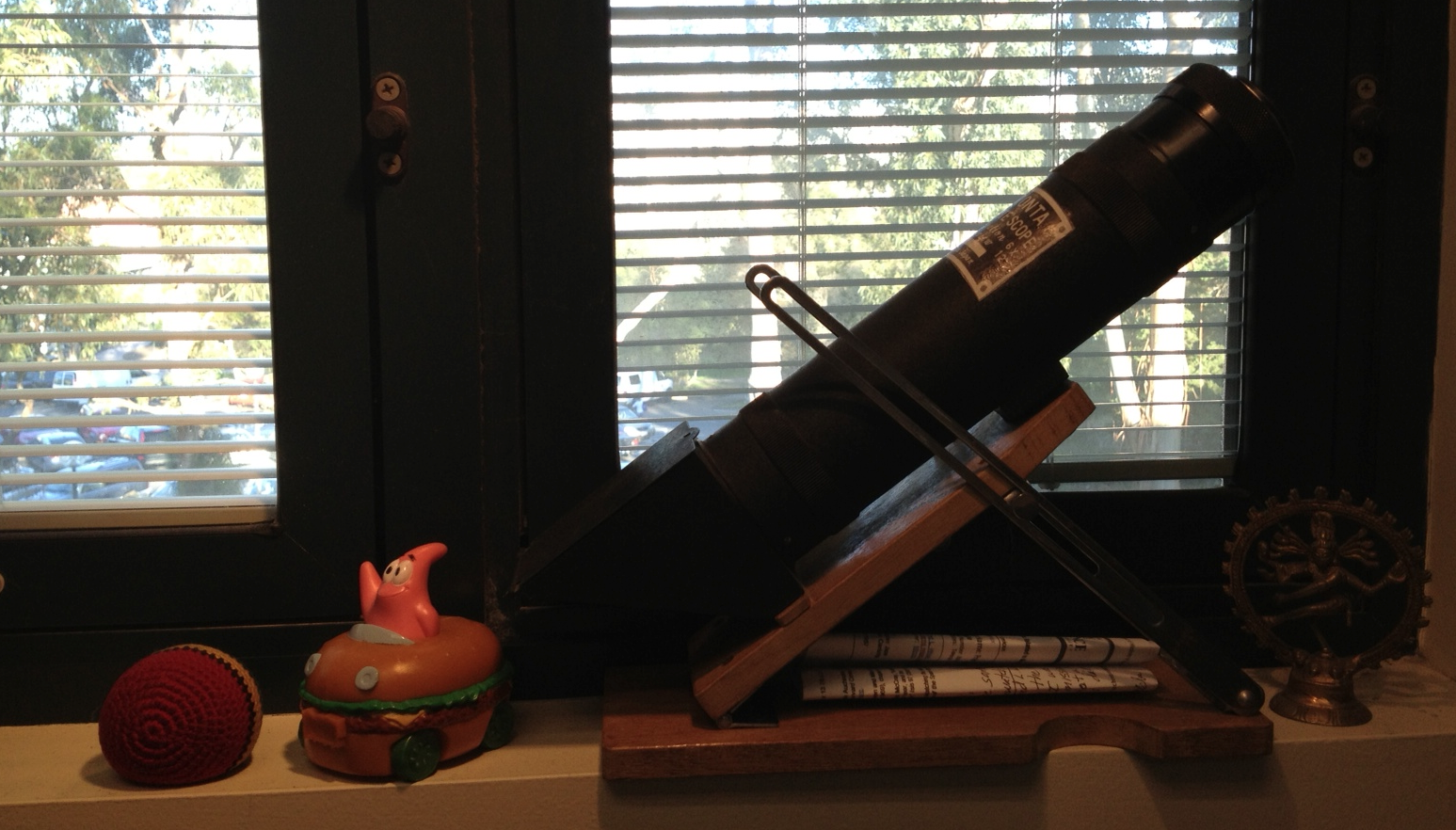 My Moonwatch telescope arrived at my office looking both well-used and well-maintained. While the body of the ‘scope is metal, it’s attached to a sturdy wooden base that has received at least one coat of varnish. Its optics are similar to the ‘scopes that Edmund Scientific made – mine has a 6X magnification and a 12 degree field of view. The thick gnurled knobs would have made it easier for a person with gloves (or cold hands) to adjust and focus it. Meanwhile, the fixed mirror and achromatic lens at its end was protected with a hinged metal flap. The ideal telescope for satellite spotting was lightweight, small, and rugged with few moving parts. An average person could afford one. Loosening a knob on the right side of the Micronata ‘scope allows the thing to be collapsed and folded for easy transport. I can easily imagine someone packing it up and slipping it into their book bag or briefcase after spending a few hours on the Moonwatch front lines at dusk or dawn. Because not all Moonwatchers were amateur astronomers – many were initially recruited from the ranks of enthusiastic citizens but had little familiarity with telescopes – a Moonwatch telescope needed to be fairly simple and easy to repair.Individual telescopes, however, were just one part of a much larger ensemble of people and gear. Consider this photograph which shows the Terre Haute Moonwatch team sometime in 1957:
My Moonwatch telescope arrived at my office looking both well-used and well-maintained. While the body of the ‘scope is metal, it’s attached to a sturdy wooden base that has received at least one coat of varnish. Its optics are similar to the ‘scopes that Edmund Scientific made – mine has a 6X magnification and a 12 degree field of view. The thick gnurled knobs would have made it easier for a person with gloves (or cold hands) to adjust and focus it. Meanwhile, the fixed mirror and achromatic lens at its end was protected with a hinged metal flap. The ideal telescope for satellite spotting was lightweight, small, and rugged with few moving parts. An average person could afford one. Loosening a knob on the right side of the Micronata ‘scope allows the thing to be collapsed and folded for easy transport. I can easily imagine someone packing it up and slipping it into their book bag or briefcase after spending a few hours on the Moonwatch front lines at dusk or dawn. Because not all Moonwatchers were amateur astronomers – many were initially recruited from the ranks of enthusiastic citizens but had little familiarity with telescopes – a Moonwatch telescope needed to be fairly simple and easy to repair.Individual telescopes, however, were just one part of a much larger ensemble of people and gear. Consider this photograph which shows the Terre Haute Moonwatch team sometime in 1957: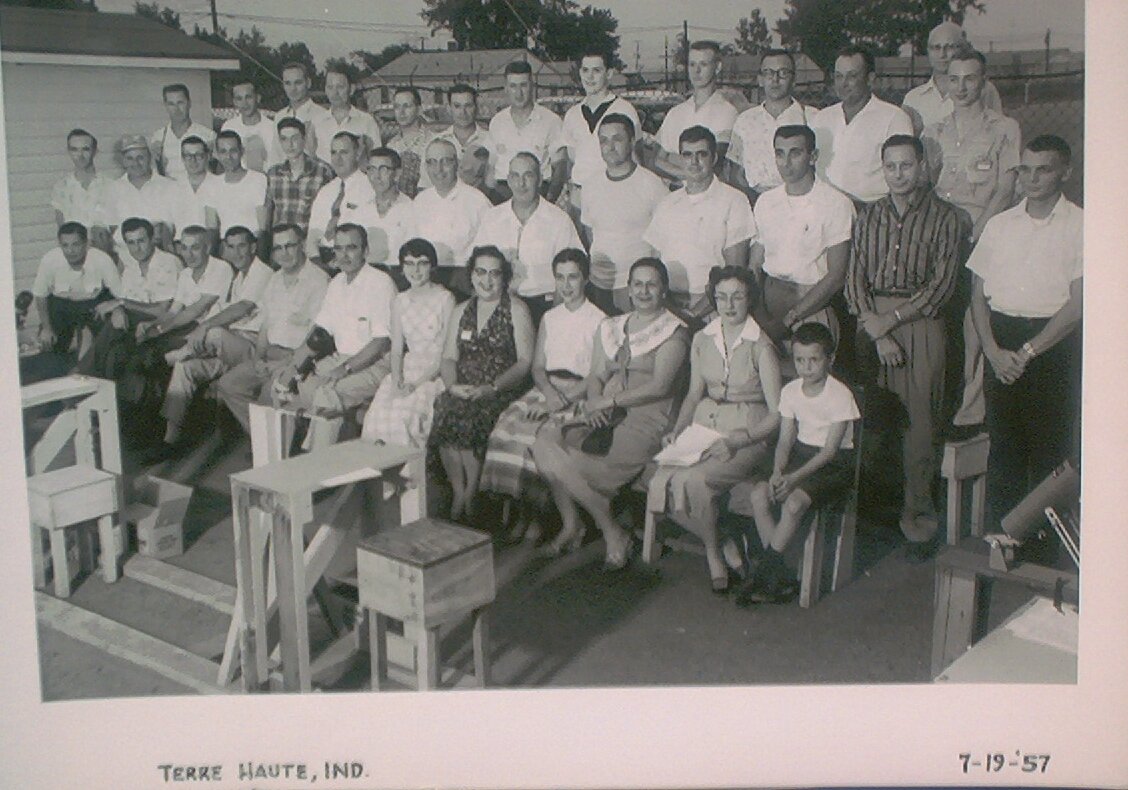 40 men and women sit on benches or stand around them with their telescopes arrayed nearby. The photograph’s back label attests to the diverse backgrounds that Moonwatchers came from – secretary, accountant, heavy equipment operator, plant foreman. This group started out observing on folding chairs and temporarily mounted their telescopes on cheap tables. Eventually they had the luxury of satellite spotting from one of the best equipped and most comfortable Moonwatch stations in the world. Besides the satellite observing room, the station had a small room which housed timing gear and shortwave radio equipment.
40 men and women sit on benches or stand around them with their telescopes arrayed nearby. The photograph’s back label attests to the diverse backgrounds that Moonwatchers came from – secretary, accountant, heavy equipment operator, plant foreman. This group started out observing on folding chairs and temporarily mounted their telescopes on cheap tables. Eventually they had the luxury of satellite spotting from one of the best equipped and most comfortable Moonwatch stations in the world. Besides the satellite observing room, the station had a small room which housed timing gear and shortwave radio equipment.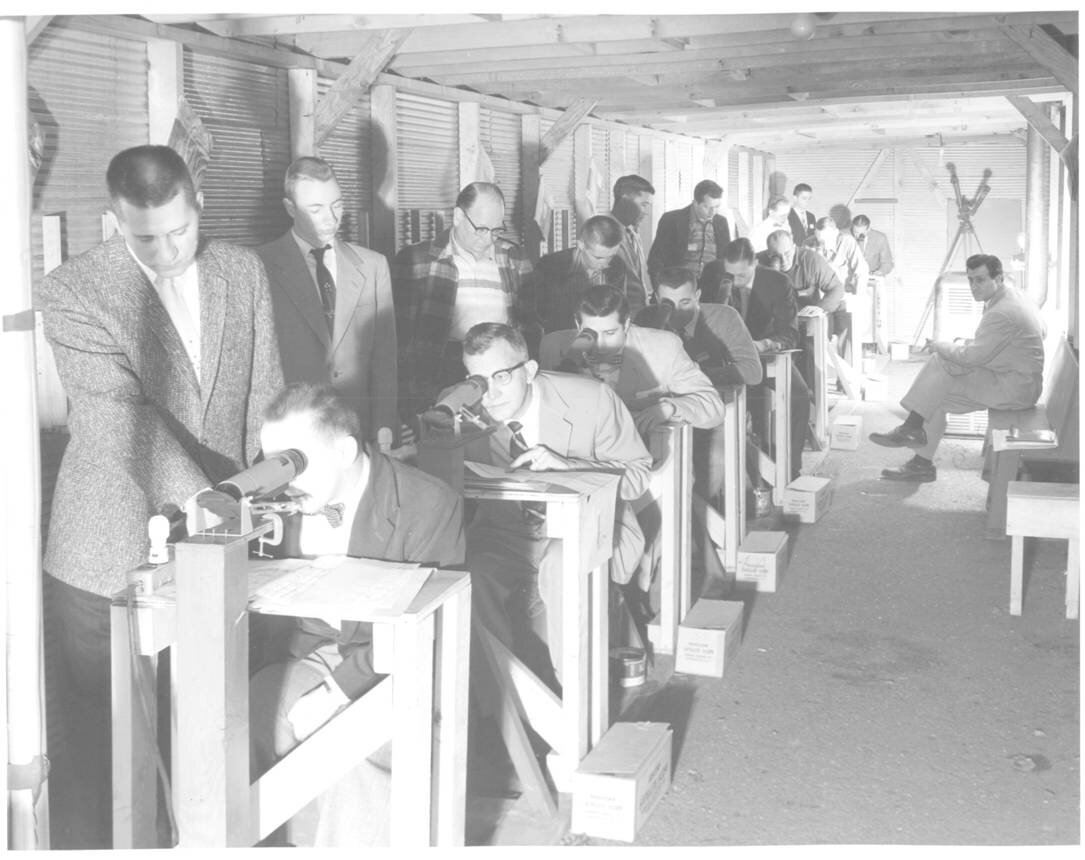 Telescopes, like the one that George gave me, have stories. In Fort Worth, Texas, Charlie Mary Noble organized a Moonwatch team composed mostly of kids and young teens. From out of her house, she operated a unique lending library – instead of books, kids could check out telescopes. For fifty cents a week allowed a child to rent a good-quality reflecting telescope with a 4-inch mirror – large enough to start doing some serious amateur astronomy. She also loaned Moonwatch telescopes. One of these – identified only as #8 in correspondence with the Smithsonian – was believed lost after floods hit the Fort Worth area in the late spring of 1957. It had been loaned to a young boy who, when told to evacuate his home due to a levee breech nearby, placed it on high shelf in his room. The telescope floated out his window and bobbed along in its wooden case until someone fished it out and returned it, none too worse for wear, to Noble’s telescope library. ((The Fort Worth Museum of Science and History later named its planetarium after Noble))“Reading a machine” means being aware of what an artifact might say about the person who designed it and the expectations of its users. I keep my Moonwatch telescope on a table next to my desk. I enjoy seeing it there when I come to the office in the morning. I don’t know what new stories this particular artifact might be able tell me. But I’m listening.
Telescopes, like the one that George gave me, have stories. In Fort Worth, Texas, Charlie Mary Noble organized a Moonwatch team composed mostly of kids and young teens. From out of her house, she operated a unique lending library – instead of books, kids could check out telescopes. For fifty cents a week allowed a child to rent a good-quality reflecting telescope with a 4-inch mirror – large enough to start doing some serious amateur astronomy. She also loaned Moonwatch telescopes. One of these – identified only as #8 in correspondence with the Smithsonian – was believed lost after floods hit the Fort Worth area in the late spring of 1957. It had been loaned to a young boy who, when told to evacuate his home due to a levee breech nearby, placed it on high shelf in his room. The telescope floated out his window and bobbed along in its wooden case until someone fished it out and returned it, none too worse for wear, to Noble’s telescope library. ((The Fort Worth Museum of Science and History later named its planetarium after Noble))“Reading a machine” means being aware of what an artifact might say about the person who designed it and the expectations of its users. I keep my Moonwatch telescope on a table next to my desk. I enjoy seeing it there when I come to the office in the morning. I don’t know what new stories this particular artifact might be able tell me. But I’m listening.